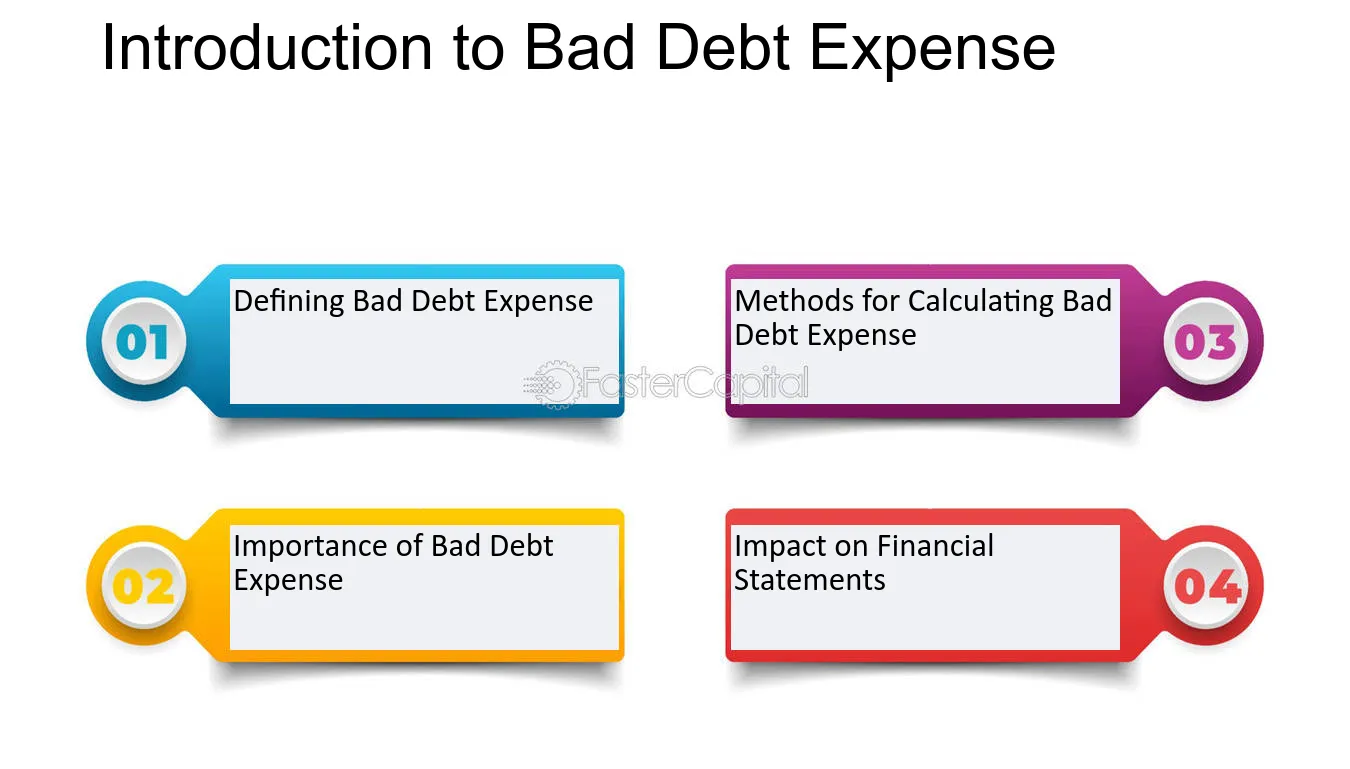What is Bad Debt Expense?
Bad debt expense is a term used in accounting to describe the amount of money that a company expects to lose due to customers who are unable or unwilling to pay their debts. It is an important concept because it allows companies to anticipate and account for potential losses in their financial statements.
Definition
Bad debt expense refers to the portion of accounts receivable that a company believes will not be collected. When a customer fails to pay their debt, the company must write off the amount as a loss. This loss is recorded as an expense in the company’s income statement.
Estimation Methods

The percentage of sales method calculates bad debt expense as a percentage of total sales. This method assumes that a certain percentage of sales will result in bad debts. The percentage used may vary depending on the company’s experience and industry norms.
The aging of accounts receivable method estimates bad debt expense based on the age of the outstanding accounts. The older the account, the higher the likelihood that it will become uncollectible. This method categorizes accounts receivable into different age groups and applies different percentages to each group.
It is important for companies to regularly review and update their estimation methods to ensure that bad debt expense is accurately reflected in their financial statements. By doing so, companies can better manage their cash flow and make informed decisions about credit policies and debt collection strategies.
Definition and Estimation Methods
Bad debt expense refers to the amount of money that a company expects to lose due to customers who are unable or unwilling to pay their outstanding debts. It is a common occurrence in business, especially for companies that offer credit to their customers.
There are several methods that companies use to estimate their bad debt expense:
| Method | Description |
|---|---|
| Percentage of Sales Method | This method estimates bad debt expense as a percentage of total sales. The company determines a historical percentage of sales that typically result in bad debts and applies that percentage to the current period’s sales. |
| Aging of Accounts Receivable Method | This method categorizes accounts receivable based on the length of time they have been outstanding. The company assigns different percentages to each category, representing the likelihood of collection. These percentages are then applied to the respective outstanding amounts to estimate bad debt expense. |
| Specific Identification Method | This method involves identifying specific customer accounts that are deemed uncollectible. The company assesses the financial situation of each customer and determines the likelihood of collection. The outstanding amounts for these specific accounts are then recognized as bad debt expense. |
It is important for companies to regularly review and update their estimation methods to ensure the accuracy of their bad debt expense. This helps them manage their cash flow effectively and make informed decisions regarding credit policies and collection efforts.
Additionally, companies may also consider factors such as economic conditions, industry trends, and customer creditworthiness when estimating their bad debt expense. These external factors can significantly impact the likelihood of customers defaulting on their debts.
Overall, the estimation of bad debt expense is a crucial aspect of financial management for companies. By accurately estimating and accounting for potential losses, companies can better plan and allocate their resources, ultimately improving their financial stability and profitability.

Emily Bibb simplifies finance through bestselling books and articles, bridging complex concepts for everyday understanding. Engaging audiences via social media, she shares insights for financial success. Active in seminars and philanthropy, Bibb aims to create a more financially informed society, driven by her passion for empowering others.
